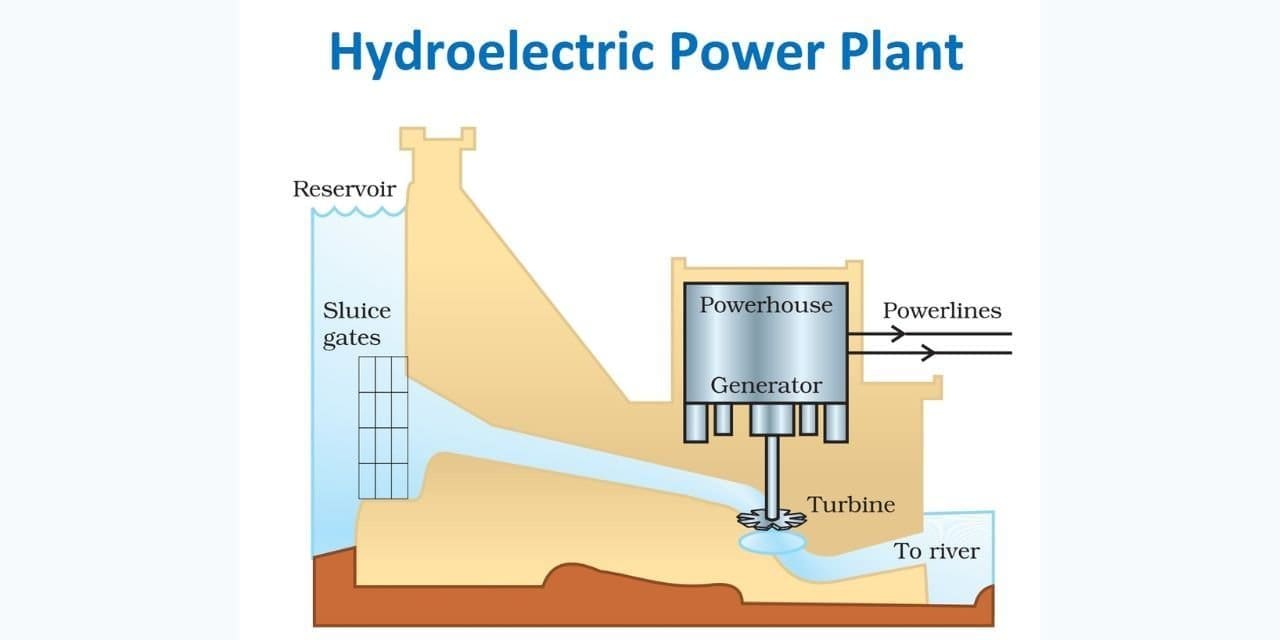In the quest for sustainable energy solutions, hydroelectric plants emerge as key players, harnessing the natural flow of water to generate clean, renewable power. This centuries-old technology remains one of the most efficient and environmentally friendly methods of producing electricity.
With the growing emphasis on reducing carbon footprints and transitioning to green energy sources, the role of hydroelectric plants has never been more crucial. This exploration dives into the workings, benefits, and prospects of hydroelectric power.
Harnessing the Ancient Force of Water
The concept of using water to generate power dates back thousands of years, with early civilizations utilizing water wheels to grind grain. Today’s hydroelectric plants are the modern descendants of these rudimentary machines, employing advanced technologies to convert the kinetic energy of flowing water into electricity on a massive scale.
The Heart of Hydroelectricity: The Dam
At the core of many hydroelectric plants is the dam, a formidable structure designed to control the flow of water. By creating a reservoir, dams store vast amounts of water. The controlled release of this water through turbines generates electricity. The mechanics are simple yet incredibly efficient: water flows downhill, propelled by gravity, and spins turbine blades, which then drive generators to produce electricity.
Diverse Designs for Diverse Needs
Hydroelectric plants come in various designs, each tailored to specific environmental and geographical conditions.
Run-of-river plants, for instance, leverage the natural flow of rivers, minimizing environmental impact. In contrast, pumped-storage facilities act as giant batteries, storing energy by pumping water to higher elevations during low demand and releasing it during peak times.
A-Pillar of Sustainable Energy
Hydroelectricity stands out among renewable energy sources for its low greenhouse gas emissions and minimal carbon footprint. Once operational, hydroelectric plants produce power without burning fossil fuels, significantly reducing pollution and helping combat climate change.
Furthermore, the flexibility of hydroelectric power plants, especially pumped-storage facilities, makes them ideal partners for variable renewable sources like wind and solar, providing reliable backup power to balance the grid.
Economic and Social Benefits
Beyond environmental advantages, hydroelectric plants contribute significantly to economic development. They create jobs, both during construction and operation, and foster local industries.
Additionally, the infrastructure associated with hydroelectric power, such as reservoirs, can support agriculture through irrigation, and flood control, and provide recreational opportunities, enhancing community livelihoods.
Advancing Hydro Technology
Innovation in hydroelectric technology continues to evolve, with submersible pressure transducers playing a vital role in enhancing efficiency and monitoring.
These devices, designed to withstand the harsh conditions of underwater environments, measure the pressure of the water column, providing accurate data crucial for the optimal operation of hydroelectric plants.
By monitoring water pressure in real-time, operators can make informed decisions on water flow management, ensuring the turbines run at maximum efficiency. Furthermore, these sensors contribute to the safety and longevity of the infrastructure by helping to predict and prevent potential issues arising from fluctuating water levels or unexpected pressure changes.
The integration of submersible pressure transducers into hydroelectric systems exemplifies the sector’s commitment to technological advancement and operational excellence.
Navigating Challenges and Controversies
Despite their benefits, hydroelectric plants are not without controversy. Large-scale dams can have profound impacts on local ecosystems, altering water temperatures, flow patterns, and sediment transport, which can harm aquatic life and displace communities.
Balancing the need for clean energy with environmental preservation and social responsibility is a complex challenge that requires innovative solutions and comprehensive planning.
Advancements and Innovations
The future of hydroelectric power is bright, with ongoing advancements aimed at enhancing efficiency, reducing environmental impacts, and expanding capacity. Emerging technologies, such as small hydro and in-stream turbines, offer the potential for less intrusive, more sustainable hydroelectric generation. Meanwhile, efforts to improve fish passage and sediment management continue to mitigate ecological concerns.
Toward a Renewable Future
As the world accelerates its transition to renewable energy, the role of hydroelectric plants becomes increasingly significant.
Their ability to provide stable, large-scale power complements the intermittency of wind and solar, making them indispensable in the quest for a sustainable energy future.
Governments and industries are recognizing this potential, reflected in policies and investments that support the expansion and modernization of hydroelectric infrastructure.
The Global Perspective
Globally, hydroelectric power is a major contributor to the renewable energy landscape, with significant untapped potential in many regions.
Countries with abundant water resources have the opportunity to harness this power, contributing not only to their energy security but also to global efforts against climate change. International cooperation and knowledge sharing are key to realizing this potential while ensuring equitable and sustainable development.
Conclusion
Hydroelectric plants embody the convergence of ancient principles and modern technology in the pursuit of sustainable energy. By harnessing the natural flow of water, they offer a clean, reliable power source that supports the global transition to renewable energy.
While challenges remain, particularly regarding ecological and social impacts, the continued evolution of hydroelectric technology promises solutions that align energy production with environmental stewardship and community well-being.
As we forge ahead, the role of hydroelectric plants in shaping a renewable, sustainable future is not only significant but indispensable.

